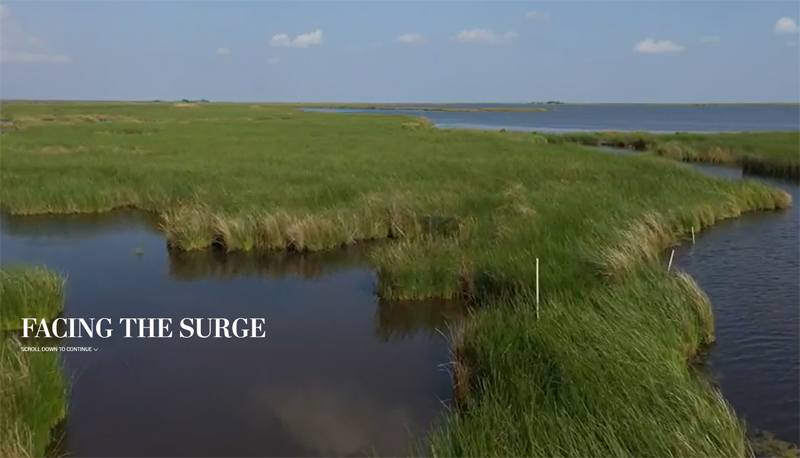
Tipping Points – The Riskiest Bet
When our planet’s average temperature increases steadily and gradually, the climate – the range of the weather over a period of time – gradually changes as well, until it suddenly jumps into a new condition. Scientists who study these abrupt changes refer to them as tipping points.
When our planet’s average temperature increases steadily and gradually, the climate – the range of the weather over a period of time – gradually changes as well, until it suddenly jumps into a new condition. Such leaps have happened many times over the long history of Earth. Scientists who study these abrupt changes refer to them as tipping points. While nature adapts and may even thrive during gradual change, nature does not adapt well to sudden change. Some past climate tipping points have even contributed to mass extinctions.
Tipping points occur when a small change causes more changes to follow on, causing still more changes. This multiplication process is “positive feedback.” A landslide is an example – a rock starts sliding down a steep slope and causes more rocks to fall. If a tipping point is reached, an enormous, irreversible, and sudden change might follow. Putting the original rock back in its previous place doesn’t restore the land to its former state. Trees and other life destroyed in the slide may or may not grow back after a long time, but that land will never be the same as it was.
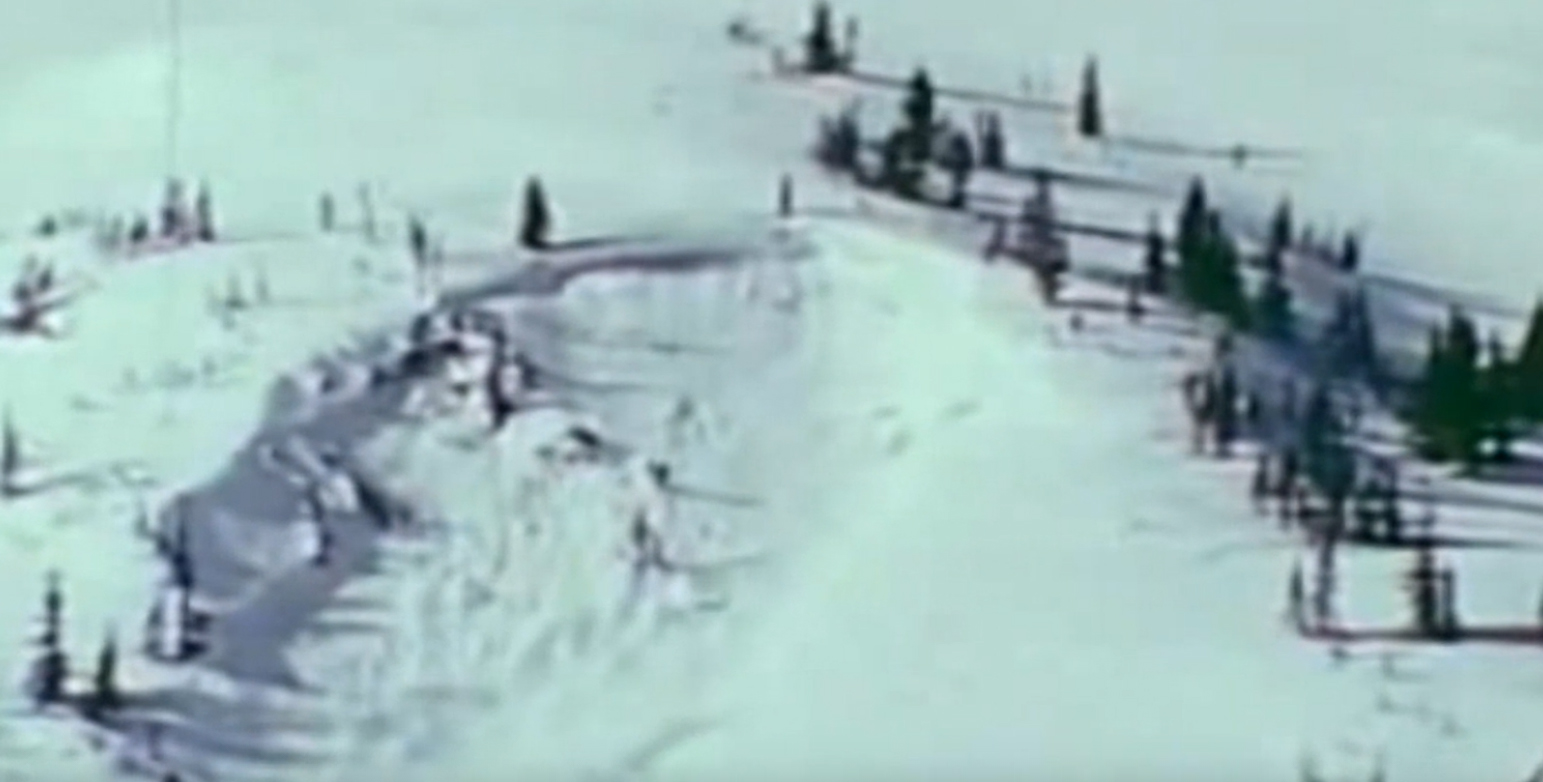

U.S. National Park Service, Public domain, via Wikimedia Commons
The present arrangement of continents and ocean currents make the Earth’s climate susceptible to tipping points, and the great quantities of greenhouse gases that humans are adding to the atmosphere have created potential climate tipping points in our future. Seven of them are regional, meaning they aren’t expected to affect the whole planet. But climatologists now foresee seven other tipping points that might affect the entire world. These tipping points differ from the landslide example in that the consequences may not be immediately violent. But like the landslide, once a tipping point is crossed, there will be no going back.
Seven Global Tipping Points
At 0. 4°C above 2020 average (expected year 2030):
- 1. Loss of the Greenland Ice Sheet
- 2. Loss the West Antarctic Ice Sheet
At 1. 9°C above 2020 average (expected year 2100):
- 3. Death of the Amazon rainforest
- 4. Loss of the East Antarctic Ice Sheet
At 2. 9°C above 2020 average (still possible to avoid):
- 5. The Gulf Stream is blocked
- 6. Arctic permafrost thaw
At 5.0°C above 2020 average (still possible to avoid):
- 7. Absence of winter sea ice in the Arctic
The first tipping points, the loss of the two ice sheets, are almost certain to happen, and the loss of the Amazon is also very likely because of its ongoing destruction. Pledges made by world leaders in Paris in 2015 could help avoid the remaining tipping points, but there are three concerns. First, it is not at all clear that the Paris Agreements are actually being implemented. Second, there’s a very real chance that crossing any global tipping point will trigger other tipping points. The third concern is that tipping point temperatures are conservative estimates with a lot of uncertainty. It is possible that the Greenland and West Antarctic ice sheets and the Amazon rainforest have already all passed their tipping points.
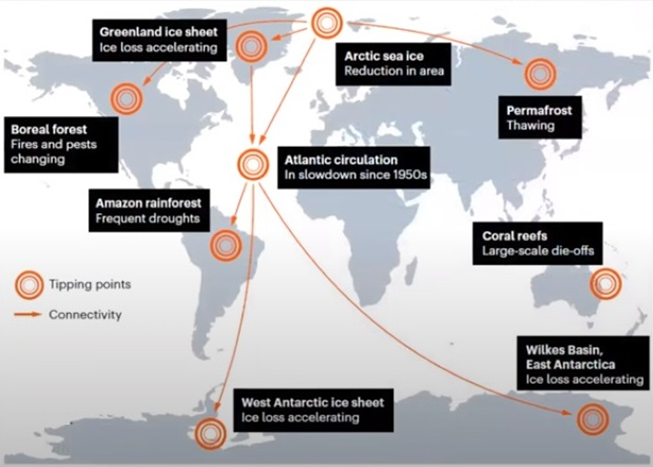
Planet Earth in 2100
Loss of the Greenland and West Antarctic Ice Sheets
The complete melt of these two ice caps will eventually result in a sea level rise of 11 meters (35 feet). Sea levels are currently rising only about 1 cm per decade, so it will be a long time in human terms before today’s shorelines are permanently under water due to these tipping points alone. But sea levels are also rising from ocean waters warming and expanding, which can accelerate the process. And significant melting of the ice caps has already taken place. Combined with stronger storms caused by the warming seas, these changes are causing extensive flooding even now in low-lying countries such as Bangladesh.
Death of the Amazon Rainforest
The loss of the Amazon rainforest is speeding up global warming. In recent years, the Amazon absorbed an amount of CO2 equal to the combined emissions of the UK, Germany, France, and Spain. But this benefit is now disappearing. Since 2016 the Brazilian Amazon, by far the largest part, has released more carbon than it has absorbed. The Amazon system generates about half of its own rainfall, but a tipping point will be passed when 20-25% of the forest is destroyed. At that point the natural Amazon water cycle will break down, dooming the rainforest that remains and ending its ability to offset carbon emissions. 17% is already gone.
Loss of the East Antarctic Ice Sheet
The East Antarctic holds the largest ice sheet on Earth, almost five kilometers (three miles) thick at its deepest. Melting it completely would ultimately raise global sea levels by about 50 meters (165 feet). Even if its tipping point is soon crossed, the sea level rise will still take thousands of years to complete. But parts of the ice sheet are already melting. An ice sheet is unstable where warming seawater meets the base of the ice. Areas at immediate risk could eventually raise sea levels more than 3 meters (10 feet). But like the Arctic ice sheets, the melting that is already happening has immediate consequences for extreme weather.
It Could Be Worse in 2100
Some of these tipping points are almost certain to happen. The Paris Agreement recognized this and set a goal of limiting warming to no more than 1.5°C above the Earth’s pre-20th century average. But we’re very close to that threshold now: today’s average is already 1.1°C above pre-20th century figures. And the tipping points at temperatures above the 1.5°C threshold will have much worse outcomes. Avoiding these consequences may still be within reach, but if we fail to meet the goals of the Paris Agreement, these two tipping points seem certain to be crossed:
Gulf Stream Collapse
London, England is about 500 miles farther north than Montreal, Canada, but its winters are far milder because the Gulf Stream, the enormous current of tropical water that flows into the North Atlantic, warms the British Isles. It is possible that melt water from the Greenland ice sheet will interrupt this flow. Such an interruption has happened before, and it caused the northern hemisphere to return to near ice age conditions in just a few years. Such a change illustrates why the threat from greenhouse gases is better described as “climate change” than “global warming.” This tipping point has a great range of uncertainty, and while it remains controversial, the Gulf Stream flow has already slowed.
The year 2015 was the hottest on record until that time, but the ocean south of Iceland experienced record cold. This is an indication of the slowing Gulf Stream, as less warm water from the Caribbean was transported north. Recently ocean temperatures off the coast of Florida exceeded 100°F (38°C), another indication that the Gulf Stream is slowing.
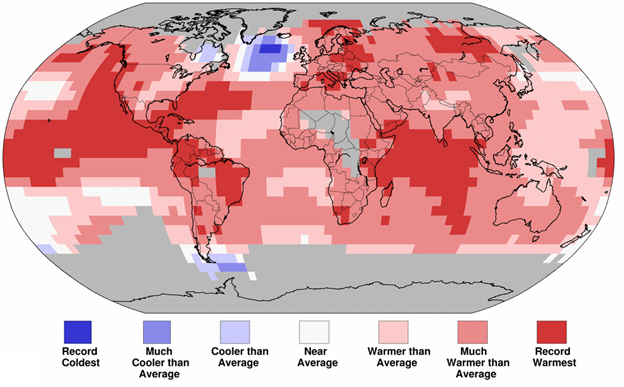
Arctic Permafrost Thaw
The Earth’s largest ever mass extinction is known as The Great Dying. 250 million years ago most species of plants and animals on land and sea disappeared forever. Mass extinctions have multiple causes, but a major contribution to the Great Dying seems to have come from enormous quantities of methane released from its frozen state (clathrates) in the Arctic permafrost. This permafrost, which can be hundreds of meters deep, contains more carbon and methane than the entire atmosphere. Researchers once feared that if global warming thawed the clathrates, the existence of the human species itself would be in danger. It is now thought that such an event is extremely unlikely, but surface permafrost in many locations around the global north is showing signs of thaw.
As mentioned above, other possible tipping points are being studied as well. What is missing in thinking about these tipping points individually is that they are not independent of one another. Positive feedback may extend from one tipping point to another, like a line of dominos. For example, melting the Greenland ice sheet will directly add about 0.1°C to the average temperature of the entire planet because the land exposed beneath the ice will reflect less sunlight and absorb more heat. But warming in the Arctic region alone might reach as much as 3.0°C, exceeding the tipping point for permafrost thaw and releasing clouds of methane, further accelerating global warming.
What You Can Do
The idea of a tipping point emerged in social sciences over 50 years ago when it was used to describe sudden changes in the behavior of large groups. Once a certain number of people adopt a new idea, society at large may then change rapidly. It can take surprisingly few people to achieve such a tipping point. These tipping points can be beneficial, such as the sudden widespread awareness of sexual abuse awakened by the #MeToo movement. To help avoid the worst outcomes of climate change, learn how there’s still time to prevent them, and then talk and text about it, too. Many sites offer descriptions of what one person can do – don’t obsess, take what actions suit you and, most importantly, communicate about it. (See the sidebar for a small sample of suggestions).
A popular fable tells us that frogs will sit in water that’s being slowly heated until they are boiled to death. It turns out that frogs won’t do that; it’s not really true. We need to start being at least as smart as frogs.

What Can I Do?
Here is a selection of websites offering suggestions for what each of us can do to help address the climate crisis:
9 things you can do about climate change
(Imperial College London)
18 Simple Things You Can Do About Climate Change
(UC Davis)
Actions for a healthy planet
(United Nations)
How You Can Stop Global Warming
(Natural Resources Defense Council)
10 ways you can help fight the climate crisis
(UN Environment Programme)
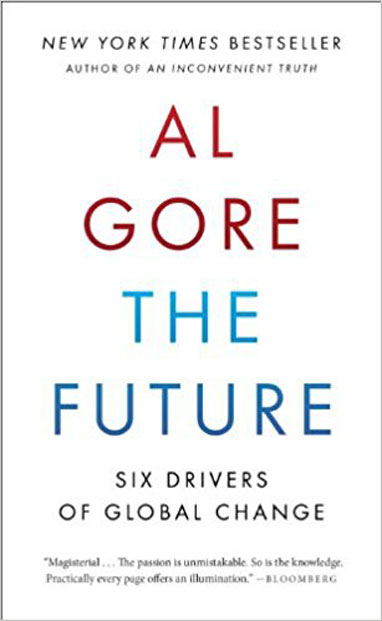
The Future
Six Drivers of Global Change
Al Gore
No period in global history resembles what humanity is about to experience. Explore the key global forces converging to create the complexity of change, our crisis of confidence in facing the options, and how we can take charge of our destiny.
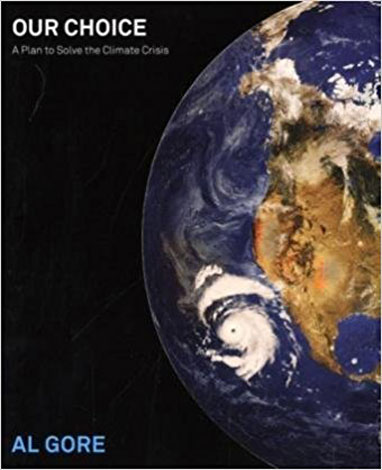
Our Choice
A Plan to Solve the Climate Crisis
Al Gore
We clearly have the tools to solve the climate crisis. The only thing missing is collective will. We must understand the science of climate change and the ways we can better generate and use energy.
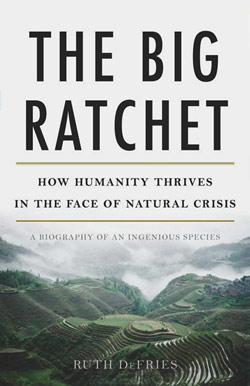
The Big Ratchet
How Humanity Thrives in the Face of Natural Crisis
Ruth DeFries
Human history can be viewed as a repeating spiral of ingenuity—ratchet (technological breakthrough), hatchet (resulting natural disaster), and pivot (inventing new solutions). Whether we can pivot effectively from the last Big Ratchet remains to be seen.
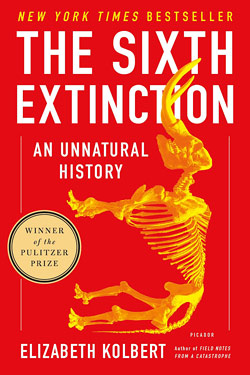
The Sixth Extinction
An Unnatural History
Elizabeth Kolbert
With all of Earth’s five mass extinctions, the climate changed faster than any species could adapt. The current extinction has the same random and rapid properties, but it’s unique in that it’s caused entirely by the actions of a single species—humans.
In the series: Our Climate Crisis
Further Reading
External Stories and Videos

Watch: Digitalization & Energy: A new era in energy?
International Energy Agency
The IEA’s latest report, Digitalization & Energy, is the first-ever comprehensive effort to depict how digital technologies could transform the world’s energy systems.

